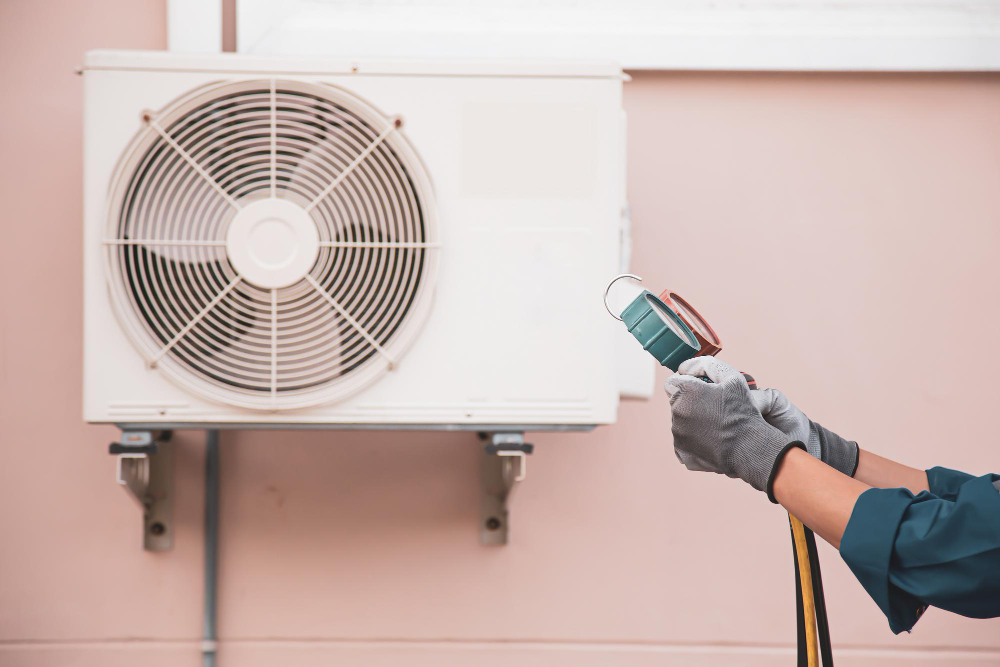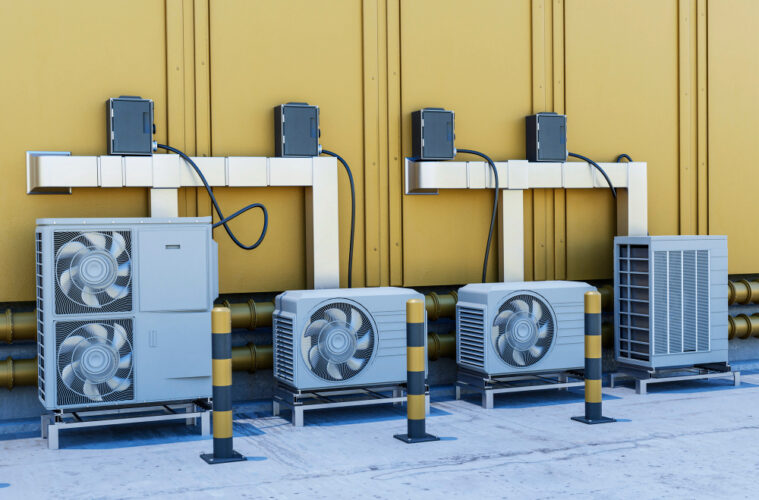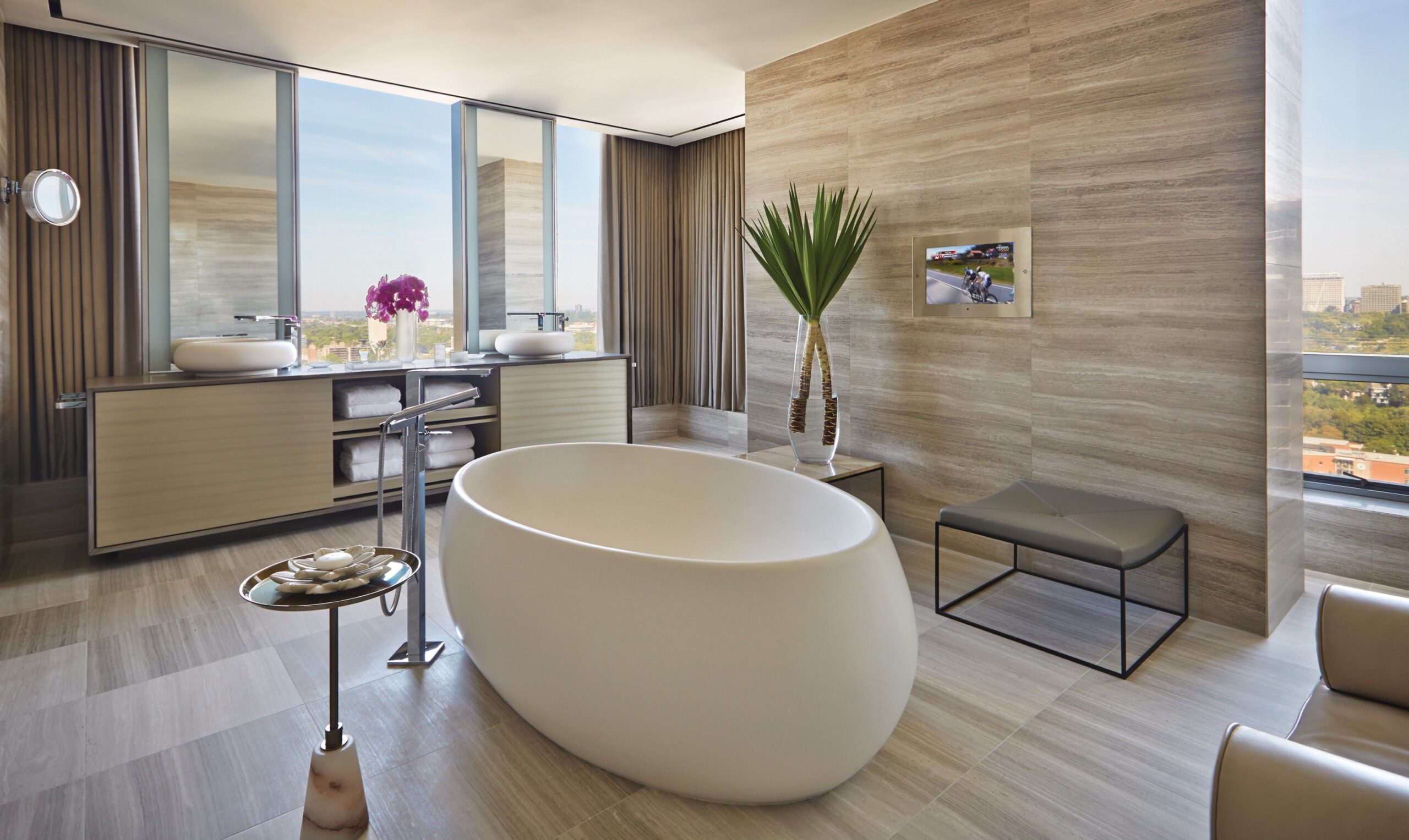Color and air conditioning might seem like separate parts of design and comfort, but they’re deeply connected. The shades we choose can change how a room feels and even how hard an HVAC system has to work. This article explores how color, materials, and temperature perception come together to shape real indoor comfort, not just how a space looks, but how it feels.
Indoor Thermal Comfort Basics
Indoor thermal comfort is the state where people feel neither too hot nor too cold, but it’s more than air temperature. It’s a mix of airflow, humidity, radiant heat from surfaces, personal activity, and clothing levels.
In interior design, indoor thermal comfort shapes how inviting a space feels, a room can look stunning yet feel oppressive if the air is stagnant or surfaces radiate heat unevenly. Materials, colors, and layouts all change how we experience color and temperature. A glass-heavy modern interior, for example, can look cool but feel hot because radiant heat builds up on surfaces, while a matte, textured room absorbs and redistributes heat differently.
For HVAC planners, understanding indoor thermal comfort means designing systems that balance temperature with surface heat and airflow dynamics, not just thermostat settings. Radiant flooring or zoned systems can counter temperature gradients that décor or materials might create. Designers influence how air flows and feels, HVAC pros make that feeling sustainable. Together, they’re not just controlling air; they’re sculpting human comfort.
Thermal Color and Temperature Perception
Color doesn’t just decorate, it psychologically manipulates how we feel temperature. Warm tones like reds, oranges, and yellows create the illusion of warmth, while cool tones like blues and greens evoke coolness. The brain associates these hues with natural color and temperature cues, fire and sunlight for warmth, water and shade for coolness.
In rooms with limited HVAC flexibility (like historical homes or sun-drenched offices), designers use thermal color to compensate for perceived temperature. A north-facing room painted in warm ochre feels cozier, while a sun-heavy space in pale sage feels naturally cooler, even when the thermostat doesn’t change.
Designers who understand this can “trick” the body: warm tones in naturally cold spaces can reduce the need for heating, while cooler palettes make bright rooms feel more breathable without dropping the AC. It’s not color theory, it’s thermal color psychology.
Color Absorbing Heat and Energy Use

A dark tile floor or wall under a large window can store and release heat long after sunset, subtly affecting indoor thermal comfort and HVAC cycles. That’s where thermal mass comes in: deep-colored stone or concrete floors can store solar heat during the day and release it at night, stabilizing temperature swings.
Essentially, color absorbing heat acts as a passive thermal layer, one that either amplifies or reduces the workload of your HVAC system. So yes, color absorbing heat matters, but the real question is: where and when should that heat be absorbed or reflected?
Lighting Heat and Color Reflection
The rule is simple physics:
Absorb more heat: black, navy, dark brown, deep green, charcoal.
Reflect more heat: white, cream, beige, pale gray, pastel hues.
But it’s not just color, finish matters too. A glossy dark surface reflects more light than a matte medium one. Choosing low-LRV (Light Reflectance Value) colors in the wrong context can make a space feel stuffy, while high-LRV finishes bounce light and maintain cooler surface temperatures.
Think of lighting heat as part of your design equation. Color, finish, and lighting heat together decide how comfortable a room feels. High-absorption tones like charcoal, rust, and navy act like thermal batteries, ideal for colder regions or winter-heavy facades. High-reflectance shades like white, cream, and pale gray work like shields, deflecting solar radiation in hot, sun-exposed zones.
The overlooked factor is how saturation and finish interact. A low-sheen dark color might trap less heat than a glossy medium tone because reflectivity and emissivity behave differently under natural lighting heat. Smart designers test LRV not just for lighting design but also for thermal color balance.
Dark Siding and Color Absorbing Heat
Dark siding can increase wall temperatures by up to 20-40°F compared to light tones, especially on west and south-facing walls. This added heat seeps indoors, forcing HVAC systems to work harder. However, higher surface temperatures don’t always mean higher indoor air temps, that depends on insulation, ventilation gaps, and radiant barriers.
To counter this, HVAC designers use smart zoning, radiant barriers, ventilated facades, and variable-speed or variable refrigerant flow (VRF) systems that adjust cooling output dynamically instead of cycling inefficiently. This approach supports better indoor thermal comfort while minimizing color absorbing heat effects.
Paired with breathable underlayment, reflective sheathing, or light trim and roofing, even dark exteriors can remain energy-efficient when HVAC strategy complements design. The smarter approach isn’t avoiding dark colors but designing with them intentionally, treating HVAC as the counterweight that turns aesthetic choice into comfort, not cost.
Color Strategy and Energy Efficiency
Strategic color placement acts as passive temperature control. Light exteriors reflect solar gain, lowering cooling loads, while dark floors or walls near windows absorb heat during winter, serving as mini thermal batteries. Balanced palettes prevent hot and cold pockets that cause thermostat overcorrections.
When designers and HVAC planners collaborate early, they can use color and temperature strategy to redirect radiant heat naturally, reducing the need for mechanical compensation and cutting energy use without compromising comfort or aesthetics.
Interior color zoning, using lighter tones in heat-prone areas and deeper hues in cooler rooms, keeps spaces stable, while reflective finishes push daylight deeper, reducing both lighting heat buildup and lighting demand.
In short: good color planning shrinks the job HVAC has to do. It’s not just aesthetics, it’s energy choreography.
Thermal Color Choices for Every Climate

Mixed climates can balance mid-tones with adaptable HVAC zoning, for instance, medium-gray walls with warm lighting feel cozy in winter and fresh in summer. Orientation matters too: east rooms benefit from soft neutrals to diffuse morning glare, while west-facing spaces stay comfortable with reflective, cool hues.
The secret isn’t just hue, it’s how light behaves through the day. The best thermal color complements the path of sunlight, not just how it looks on a swatch. Even LED cooling and smart lighting systems can enhance this, aligning artificial light with natural temperature perception to maintain steady indoor thermal comfort.
Design, HVAC, and Indoor Thermal Comfort
The best results come when design and HVAC are planned as one system, not two disciplines. Using shared modeling tools that include solar heat gain and surface reflectance data lets HVAC engineers predict how color absorbing heat and material choices affect load. Designers can share paint and finish specs early, allowing HVAC teams to fine-tune insulation, vent placement, and zoning.
When color palettes, lighting heat, and mechanical systems work in tandem, spaces feel effortlessly balanced, warm where comfort demands it, cool where efficiency matters. Dynamic lighting and air zoning align visual warmth with physical warmth from airflow or radiant panels, while thermal imaging and energy modeling predict how color and temperature choices affect comfort.
Choosing materials with specific emissivity values and integrating lighting temperature with airflow, for instance, pairing a 2700K bulb with a gentle current, can mimic the comfort of a naturally warm room without extra heating. Energy-efficient LED cooling setups further optimize both visual and thermal environments.
When design and HVAC talk early, they craft interiors that look comfortable, feel balanced, and perform efficiently. That’s not decoration, that’s indoor thermal comfort powered by thermal color intelligence.
FAQ: Common Questions About Color and Temperature
What Colors Absorb More Heat?
Colors that appear rich or bold, like charcoal, navy, or forest green, pull in more sunlight because they have more pigment density. Think of pigment as tiny light traps: the deeper the color, the more energy it stores as heat. This principle defines color absorbing heat behavior.
What Color Absorbs The Least Heat?
Matte white or very pale metallic finishes absorb the least. But texture matters too, smooth, reflective surfaces bounce heat better than flat, chalky ones. So a glossy ivory can stay cooler than a rough white wall, especially under artificial or LED cooling lighting.
Do Darker Colors Absorb More Heat?
Yes, but the “why” is what matters. Darker shades absorb more visible light, but materials with infrared-reflective coatings can cancel that effect. In other words, it’s not just color, it’s color and temperature chemistry.
Does Dark Siding Make A House Hotter?
Usually, yes, but modern siding tech is changing that. Many dark sidings now have built-in UV- blocking pigments and reflective resins that keep surface temperatures surprisingly low. Combined with LED cooling and smart HVAC systems, even dark exteriors can support comfortable indoor thermal comfort.



